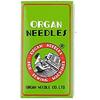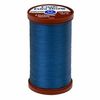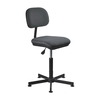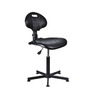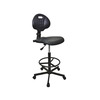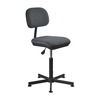The Consew Model 104-1 / 1T is for general use in oramental embroidery stiching and initiating. It is equipped with universal feed movent, an adjustable needle plate and an easy hand operated directional control.
MACHINE APPLICATIONS:
Suitable on such products as wearing apparel, linens, towels, bedspreads, shirts, shop coats, curtains, banners, emblems, blankets, table cloths, coats, and caps
Ideal for use by laundries, camping outfitters, upholsterers, drapery shops, uniform clothing suppliers, linen suppliers, and sporting goods stores
Chain stitching and drop or moss stitching
MACHINE FEATURES:
Universal feed movement allows free-hand stitching in any shape, form, style or direction
Adjustable needle plate accommodates a variety of needle sizes and threads
Easy-to-change hook needle
Uses all types of thread: cotton, silk, wool, metal, and synthetic
Equipped with device for changing from chain stitch to drop stitch without removing work or rethreading machine
Model 104-100 available for sewing sequins
- US Warranty 90 Days labor on defects in materials and workmanship.
- Non-US Warranty: 30 days parts and labor
Parts and Instruction Manual for CONSEW 104-1T,
Number of Needles: 1 (Single)
Speed, Max (S.P.M.): 800
Stitch Type: Single Needle, Single Thread - Chainstitch - Type 101
Workspace: Standard Workspace
Needle Used: 137x1 TR (Chainstitch) 137x1 SM (Moss Stitch, Drop Stitch)
Max Stitch Length: 11/64" (4.5mm)
Feeding Mechanism: Universal
Needle Bar Stroke: 9/16" (14mm)
Presser Foot Lift: 3/16" (5mm)
Feed: Universal Feed Movement
WorkSpace: 10-1/4" (260mm)
Bed Size: 7-3/4" x 16-3/8" (197mm x 416mm)
You Tube Videos on Consew 104-1T
Google Videos on Consew 104-1T





